

The more conversations you spark on WhatsApp, the harder it gets to keep every reply timely, relevant, and personal. If you’re here, you’ve realized “one phone, one inbox” doesn’t scale and it’s time for software that pairs WhatsApp’s reach with AI that actually moves the needle. Good call.
The market is crowded with WhatsApp-centric CRMs and engagement suites, so I sifted through top contenders tested features hands-on and scanned user feedback, to find the standouts that make AI-assisted engagement on WhatsApp feel seamless, whether you’re generating leads, resolving support, or driving repeat sales. (Pricing changes frequently verify on each vendor’s site before you commit.
Our best-apps lists are written by humans who spend much of their time using, testing, and writing about software. Unless otherwise noted, we spend hours hands-on with each pick, using tools as intended and scoring them against criteria for this category. We’re never paid for placement in our articles or for links we rely on reader trust, so our evaluations stay independent.
For WhatsApp-first engagement, the right platform should excel at:
BotSpace (Web, iOS, Android)
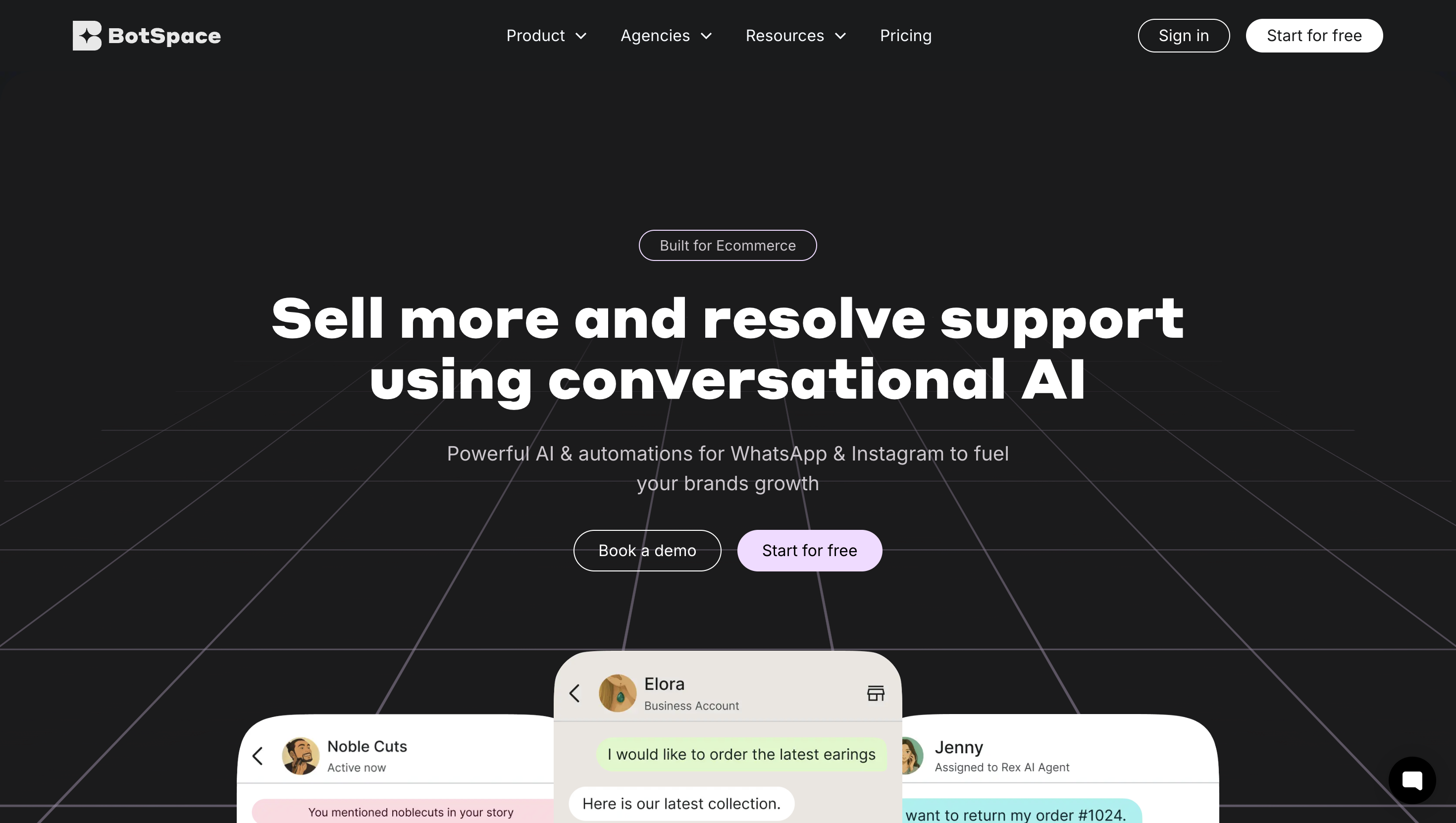
Pros
Cons
Why it made the list
BotSpace treats WhatsApp as a revenue channel, not just a support pipe. You get an AI-assisted shared inbox, comment/DM automation for Instagram, and commerce stitched directly into threads, catalogs, order updates, COD checks, and payment flows, so a single chat can move from discovery to purchase to support without context switching. For Shopify brands, that means out-of-the-box sync for products and status notifications; for teams, it means internal notes, assignments, and AI replies in one place. If you’re running CTWA or engaging via Instagram comments, BotSpace closes the loop by instantly opening a conversation and then nudging toward checkout with personalized prompts, rather than dumping leads into another tool. It’s purpose-built for Meta surfaces (WhatsApp + Instagram), which keeps the learning curve low and the impact high for D2C and commerce-heavy teams.
WATI (Web, iOS, Android)

Pros
Cons
Why it made the list
WATI is the poster child for “we outgrew one device and need a real inbox.” It wraps the official WhatsApp Business Platform with a multi-seat inbox, roles/permissions, automation, and analytics tailored to fast-growing SMBs. The big win is operational scale: bring WhatsApp, Instagram, and Messenger into one view, then route, tag, and report without hacks. WATI’s emphasis on templated automations and integrations helps teams roll out structured journeys (alerts, reminders, simple workflows) quickly, and the workspace model will feel familiar if you’re standardizing tools across departments. If you’re moving from “WhatsApp as a phone” to “WhatsApp as a team channel,” this is a pragmatic, WhatsApp-first upgrade that doesn’t force an enterprise CRM on day one.
Interakt (by Haptik) (Web)
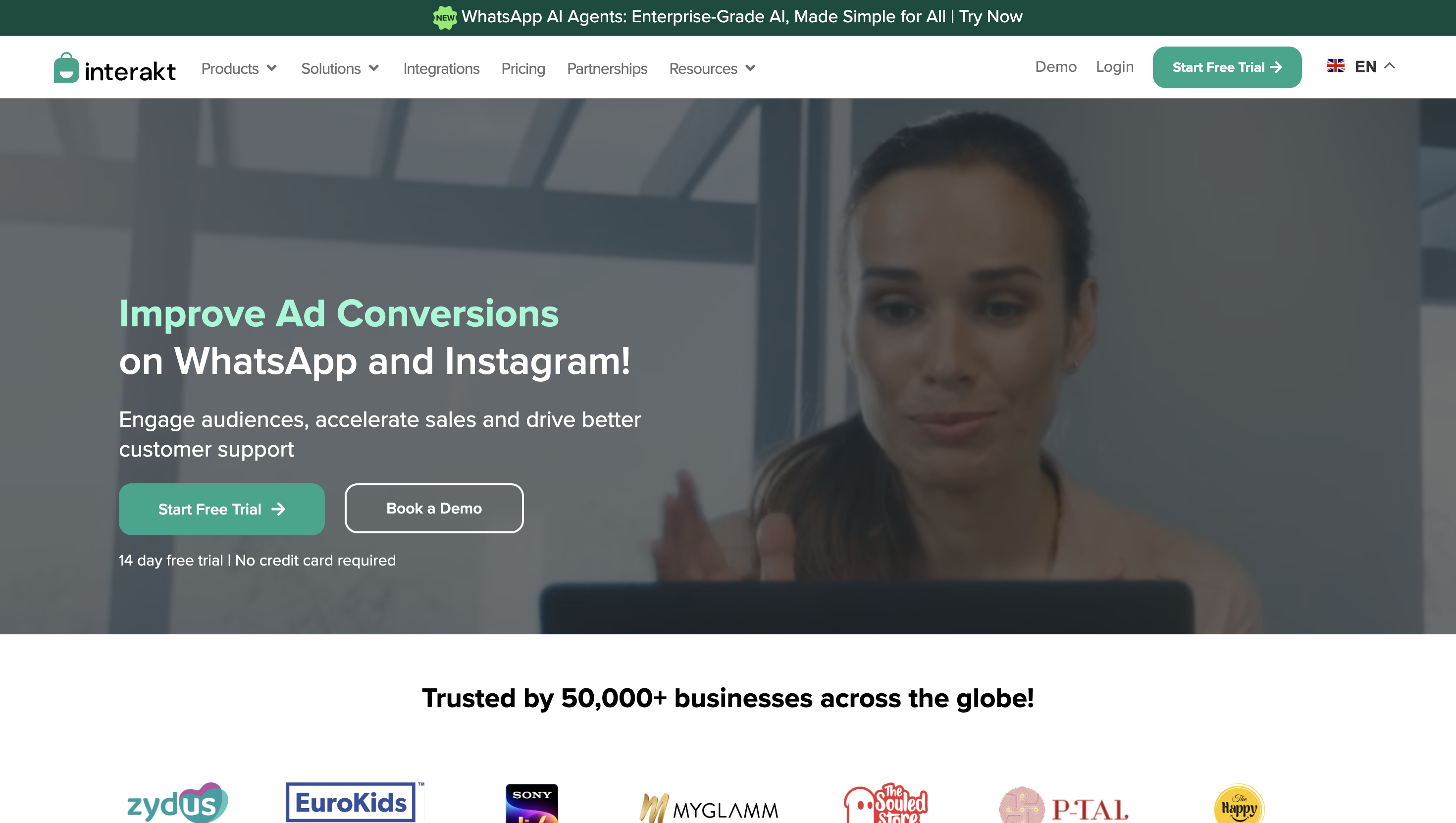
Pros
Cons
Why it made the list
Interakt keeps WhatsApp at the center and layers in AI agents that behave like a 24/7 rep: qualifying leads, answering FAQs, nudging reorders, and handing off to humans with full context when needed. It’s positioned for SMBs that want an approachable WhatsApp-first CRM, broadcasts, campaigns, contact views, while borrowing Haptik’s AI so you’re not stuck with keyword bots. The draw is velocity: you can stand up “AI employee” flows without code, then scale into richer automation as your catalog, service policies, and playbooks evolve. If you’re earlier-stage or consolidating point tools into one WhatsApp-centric hub, Interakt’s mix of CRM basics and AI lift hits a sweet spot before you graduate to heavier, multi-hub platforms.
respond.io (Web)
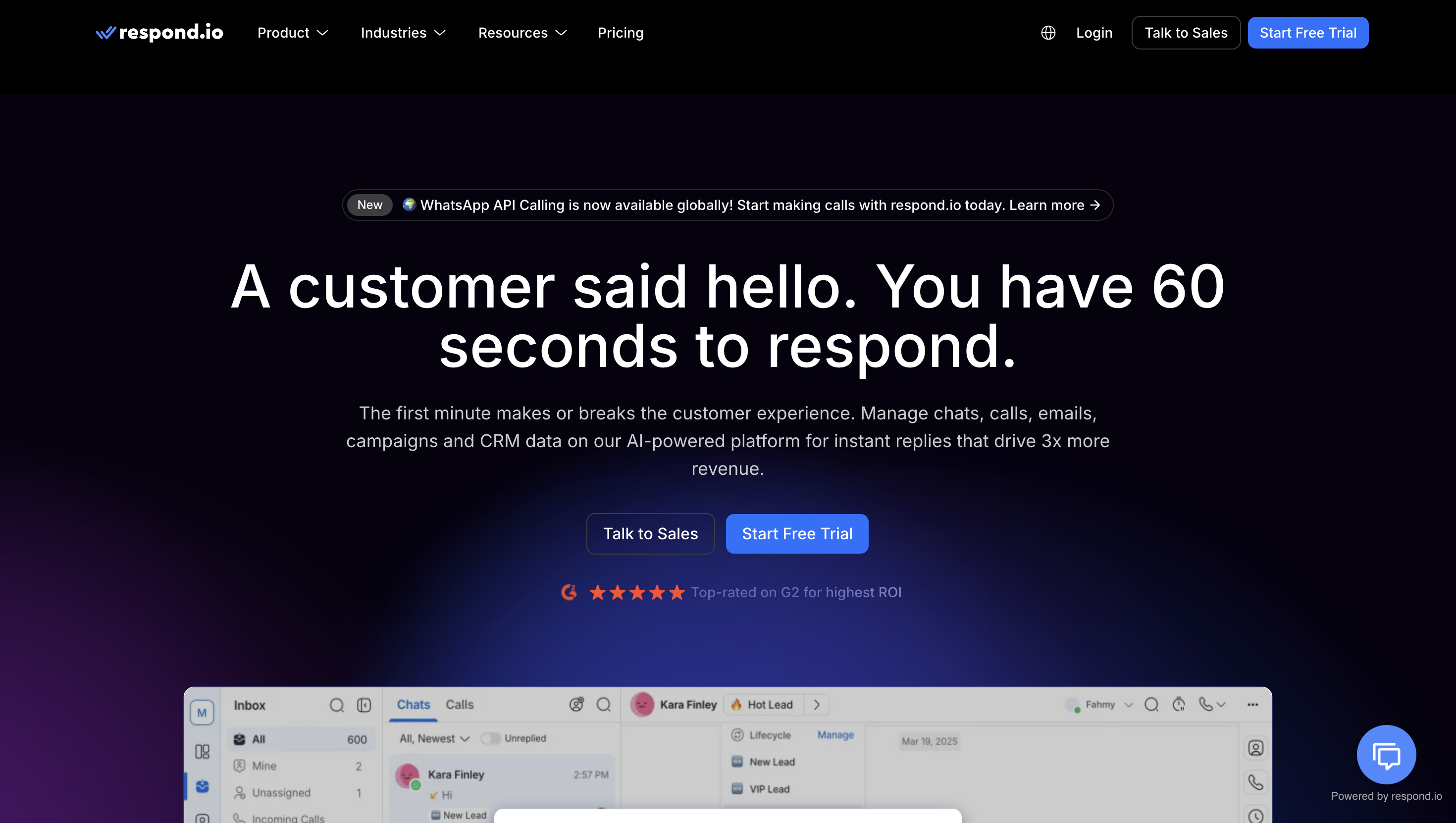
Pros
Cons
Why it made the list
respond.io is for teams that want AI where it counts, triage, suggested replies, and task automation without losing the human craft of service or sales. You can spin up WhatsApp AI agents, route by intent or channel, and then hand off seamlessly to a person while preserving full history so customers never repeat themselves. After chats end, agents can summarize, tag, and close threads for clean reporting useful when you’re measuring deflection and CSAT side-by-side. The workspace model scales from a single WhatsApp number to multi-brand, multi-region setups, so you can standardize without shoehorning your process.
SleekFlow (Web, iOS, Android)
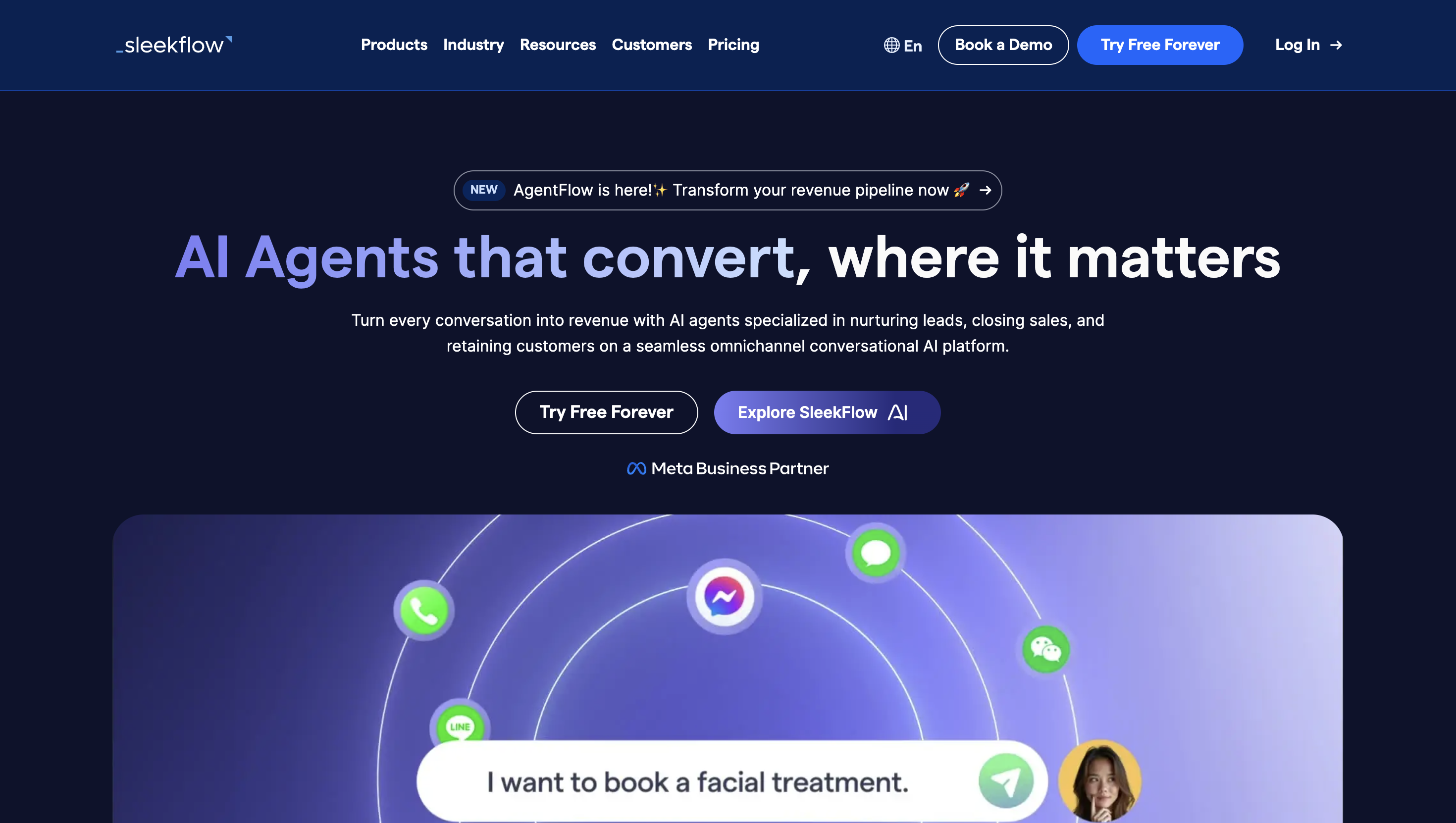
Pros
Cons
Why it made the list
SleekFlow is built for teams that sell and support in the same thread. You can present a WhatsApp catalog, generate carts, and drop pay links right inside the chat, then track payment status alongside the conversation. That reduces the classic “DM → website → cart → payment” drop-offs, and the inbox co-pilot helps reps stay on-brand with AI-assisted replies. Automation templates cover common lifecycle moments (order updates, reminders, FAQ routing), so you can set up the essentials fast and iterate. If your KPI is conversion inside WhatsApp rather than pushing traffic back to a storefront, SleekFlow’s commerce primitives and checkout shortcuts make it feel like a lightweight point-of-sale living in your inbox.
Zoko (Web)
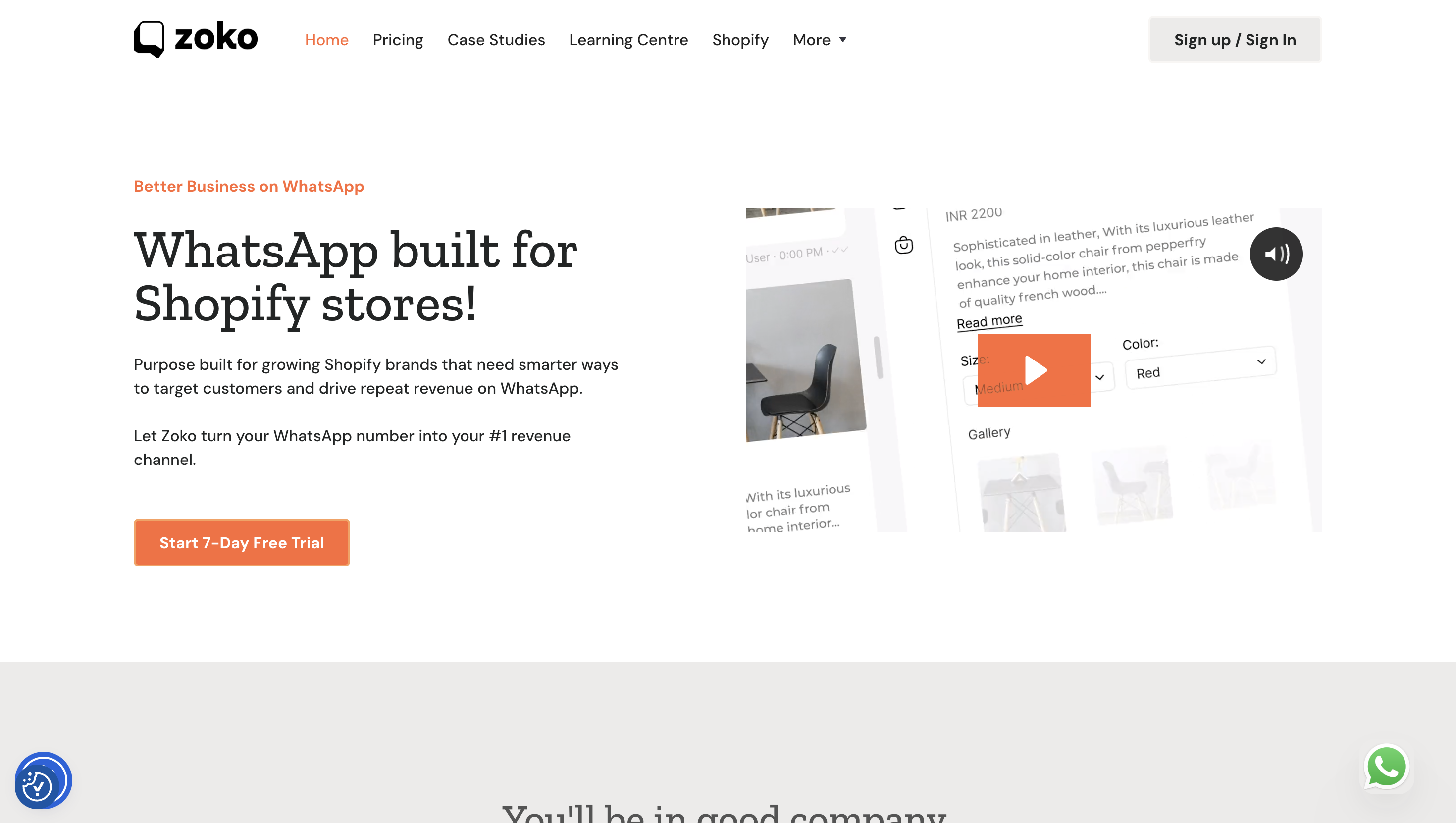
Pros
Cons
Why it made the list
Zoko is unapologetically WhatsApp-native commerce. It syncs your Shopify catalog into WhatsApp so reps (or automated flows) can share product cards, build carts, and broadcast promos at scale. The experience is tuned for chat-to-checkout speed: fewer redirects, more guided selling, and a single source of truth for what was shown, clicked, and purchased. For merchants that already live in Shopify, the integration path is straightforward and Zoko’s guidance around broadcasts and segmentation helps you grow revenue without spamming.
Twilio (Web)
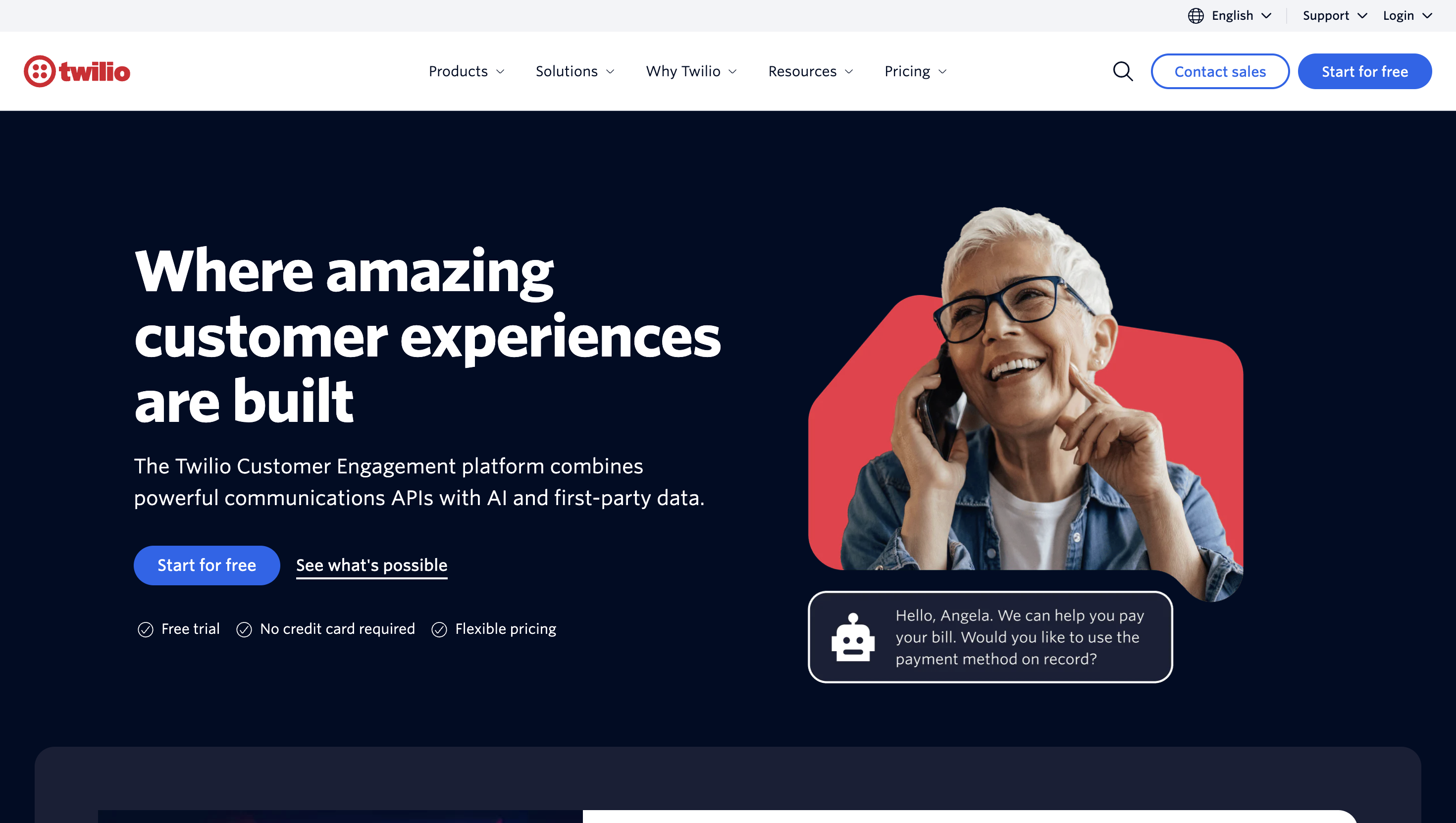
Pros
Cons
Why it made the list
When you want to own the experience, AI actions, data plumbing, and cross-channel logic, Twilio is the flexible foundation. Studio gives non-developers a drag-and-drop starting point; developers can go deep with Functions and custom integrations. With WhatsApp Business Calling generally available, escalation can move to voice without losing context in your logs. You’ll invest more upfront (it’s a toolkit, not a turnkey app), but the payoff is total control: fine-grained routing, custom AI actions, and deep integration into your warehouse and CDP.
The best tool is the one you can actually roll out and use daily to keep customers happy. Any of these picks can help, but if your goals include Instagram + WhatsApp, catalogs/payments, and a shared inbox with AI assist, BotSpace is purpose-built for that loop. Start with broadcasts and order updates, layer in AI replies, then plug in Shopify/CRM to turn conversations into revenue, all without leaving the chat.
The new age of AI-first customer engagement starts here